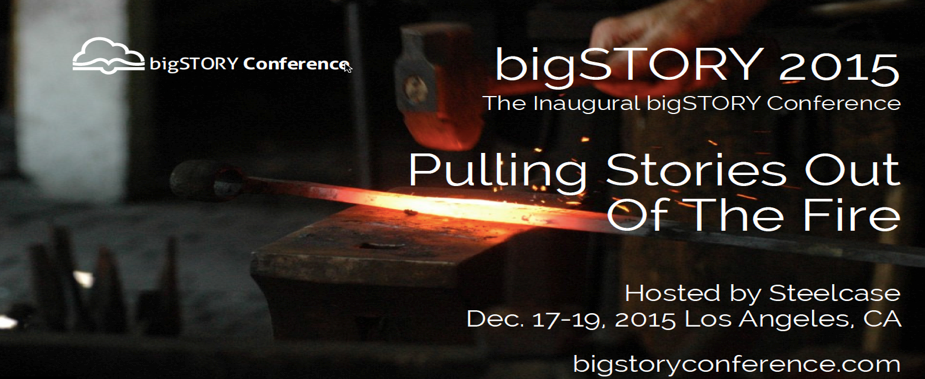Big Story Conference: ‘Mapping Quantum Storytelling’ CONTACT INFO
CONTACT INFO FOR PRESENTERS
| Amandine Savall | amandine.savall@iseor.com | SEAM Storytelling | ||
| Andres Marquez-Lara | andres@prometheancommunity.com | Recreating stories on the stage of improv | ||
| Anete M. Camille Strand | astrand@hum.aau.dk | Going Quantum - Intra-active ways of reworking organizational scenography related to citizen care | ||
| Bahareh Javadizadeh | jbahar@nmsu.edu | Autoethnography and spacetimematching: a Persian management scholar | ||
| Cynthia Cortez | cycortez@nmsu.edu | Testimonios: Conduits for communication and preparation | ||
| David Boje | davidboje@gmail.com | Quantum Storytellling Mapping: How it Works in Fractal Methods | ||
| David Perez | drperez@nmsu.edu | Antenarrative and Counternarrative Inquiry into Wal-Mart’s Greenwashing tactics and Social Responsibility Flaws | ||
| DebraPearl Hockenberry | pearlbh@aol.com | Ultraliminal Team Consciousness | ||
| Elmira Shahriari | elmirash@nmsu.edu | The most common decision-making biases in entrepreneurial marketing | ||
| Grace Ann Rosile | garosile@nmsu.edu | Ensemble Leadershp and Quantum Storytelling | ||
| Hank Bear Strevel | strevelh@nmsu.edu | pragmatic implications of systems theory | ||
| Jamie Lakey | toaojcl@nmsu.edu | Bike sharing from a quantum storytelling perspective | ||
| Jens Larsen | info@oldfriendsindustries.com | SandTray and Executive Coaching | ||
| Jillian Saylors | jrwsaylors@gmail.com | Revealing antenarratives in the autism market | ||
| Marja Turunen | marja.turunen@aalto.fi | Storytelling on Consciousness-Based View of Organizing | ||
| Mike Bonifer et al | mike@bigstory.biz | Ten story metrics for organizations | ||
| Nazanin Tourani | nxt14@psu.edu | Story Vs. Narrative: Fade or Brighten of Failures in Public Record | ||
| Rohny saylors | rsaylors@gmail.com | Entrepreneurial Storytelling of Flux | ||
| Ruoqing Zhang | ruoqing@nmsu.edu | Quantum Storytelling Network Analysis of Xiaomi’s Supply Chain Management | ||
| Tonya L. Henderson | Tonya@glysolutions.com | Sociomaterial Fractals in a Quantum Storytelling Frame | ||
| Wanda Tisby Cousar | davidboje@gmail.com | Sande Leadership:Sustainable Education and Professional Development | ||
| Yanni Liang | yanni@nmsu.edu | The Fulfillments of Panda Express’s Mission and Values in Its Macro and Micro Storytelling |
SOME USEFUL DEFINITIONS FOR MAPPING QUANTUM STORYTELLING
Quantum Storytelling is not just words, texts, or human dramatic action. Rather, Quantum Storytelling is the pattern of assemblages of material actants, non-human beings, and humans doing a Quantum version of Storytelling in the inseparability of spacetimemattering (Boje & Henderson, 2014). Newtonian Storytelling is position in 3D space, and linear time events. Quantum Storytelling is a paradigm shift. “The game of storytelling in organizations is changing in the Quantum Age” (Boje, 2014: xxv).
Mapping Quantum Storytelling is observing and interpreting the assemblages of humans, non-human beings, and material entities as they form repeating patterns of convergence and divergence. Some patterns are fractals (patterns repeating self-sameness across magnifactions in spacetimemattering) such as branching fractals, spiral fractals, Mandelbrot fractals, Sierpinski, and Multifractals, and others just random (Henderson & Boje, 2015; Boje, 2015).





Tamara-land is a Quantum analysis of storytelling organizations, such as Disney, where there is simultaneous storytelling by assemblages of humans distributed in different rooms, hallways, buildings, transport, and trying to map what is happening, what will happen next, and what has happened (Boje, 1995).
John Dewey (1929) made a Quantum Storytelling turn after reading Warner Heisenberg’s (1927) article on the Uncertainty Principle: Observing accurately for momentum, and position is not as accurate to determine, and vice verse. Another American Pragmatist George Herbert Mead (1932) studied Niels Bohr’s Complementarity Principle (the Quantum and the Newtonian must line up) and Mead concluded that quantum time is not same as Newtonian (clock/mechanical) time. In Quantum time, the future arrives to change the present, and that emergence changes how we look at the past (in retrospection). We are always prevising (antenarrating) a prospective sensemaking of the multitude of future possibilities arriving present. When we previse, the Observer Effect, collapses many choices to one, and we change the path of arrival.
William James (1907: 98) “things tell a story” and given the plurality of material things humans carry about, organize, and assemble, the things are telling a story in their pattern. Each organization is many materials that tell many stories, and humans tune into some of them by acts of forensic, science, and detective work. Example: As we observe climate change by one apparatus or another, we change the path of its arrival by our dismissal or our changes.
